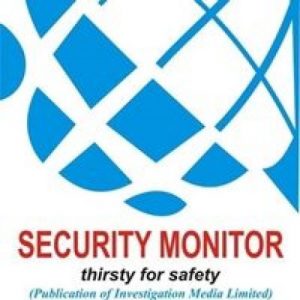HEALTH SECURITY: Succor Comes the Way of Sickle Cell Patients as Curative Drug Births In Nigeria
Sickle cell disease is a common inherited disorder with the greatest prevalence in tropical Africa where three quarters of cases occur. Two hundred thousand infants are born with sickle cell disease in Africa every year with Nigeria accounting for about three quarter of these births. Unfortunately, 60% of the 200,000 will die as infants according to WHO report April 2006.
In Lagos Nigeria, a recent study shows a prevalence of 2% of the disease (Hb SS) and the frequency of the trait (Hb AS) as over 20%. This frequency is presumed to be sustained by the survival advantage of individuals with the trait in zones with plasmodium falciparum infection as in Nigeria. Moreover, the Benin haplotype that is predominant in Nigeria presents with more severe disease than those seen in the Middle East and India.
Sickle cell disease is due to a point mutation in the haemoglobin gene. The product of this is an abnormal haemoglobin S which affects the survival of the red blood cells (RBCs) and their interactions with the blood vessels (1). The less soluble sickle cell hemoglobin produced, polymerizes at low oxygen tension, causing the characteristic sickle deformity of the red blood cells and increased mechanical fragility. There is consequently a 10 times reduction in the red cell life span and hence a chronic haemolytic anemia (2).
The pathology of Sickle Cell Disease (SCD) is multidimensional. Apart from the consequences of the chronic moderate to severe anaemia, there is diminished immune function due to infarction of the spleen during childhood and growth may be delayed. The sickled red blood cells are more rigid and adhere more readily to the blood vessels which makes flow through the small blood vessels difficult with a consequent recurrent blockage of the blood vessels that supply tissues. The subsequent organ damage is the main cause of the various complications like stroke, blindness, leg ulcers, kidney and bone damage associated with sickle cell anaemia (3). Moreover, painful episodes punctuate the course of the disease in many patients. They are characterized by unbearable pain in the bones or abdomen. The hyper dynamic state of the blood flow which is an adaptation to the chronic anaemia, may also affect the cardiovascular and pulmonary systems (4).

Other mutations in the beta haemoglobin gene may coexist with HbS to form a large clinical spectrum of disease usually referred to as sickle cell disease. These conditions such as sickle hemoglobin C disorder (Hb SC) and sickle beta thalassaemia (HbSBthal) are present in Nigeria.
Usually the health maintenance process for these patients start with early diagnosis, preferably in the new-born babies and includes administration of penicillin prophylaxis, vaccination against potential bacterial disease, and folic acid supplementation. Treatment of acute clinical presentations often includes antibiotics, pain management, administration of intravenous fluids and surgery all backed by psychosocial support. Blood transfusion is indicated in prolonged pain crisis, in early treatment and secondary prevention of stroke, fatal acute chest syndrome and other complications. However, blood transfusion is associated with numerous adverse events and moreover, blood cells contain iron and there is no natural ways of eliminating excess iron. Repeated blood transfusions (usually in excess of 20 pints) is associated with accumulation of iron in the body which may attain toxic levels (5).
Hydroxyurea, an anti-metabolite, has been shown repeatedly to reduce red blood cell sickling but its toxicity profile has drastically limited its use in adult and childhood with sickle cell disease. Similarly stem cell transplant, the only curative treatment available, has limited application due to poor infrastructure and health financing in Nigeria.
The T-AYU-HM™ Premium HERBOMINERAL FORMULATION:

The breakthrough remedy, T-AYU-HM, describes a herbo-mineral formulation for managing sickle cell disease. This is based on thousands of years’ experience in traditional medical practice – The AYURVEDA (Ancient Science of Medicine). This multi-ingredient Herbo-Mineral formulation T-AYU-HM™ Premium is registered with NAFDAC (NAFDAC Number-A7-14969L) and it has an excellent toxicity profile.
This formulation when given by oral route to patients suffering from sickle cell disease provides excellent results, namely:
• It drastically reduces all the symptoms and complications of sickle disease.
• The need for blood transfusions is also considerably reduced or eliminated.
• Increases in the hemoglobin levels were observed when the patients were given this medicine orally.
• ?It drastically reduces painful episodes in the sickle cell patients and also protects the vital organs.
• The formulation has been found to be safe and well tolerated in all patients administered with the medication (6).
Unique Patented formulation:
Each T-AYU-HMTM Premium tablet (300 mg) contains:
1. Calyx of Mica 25mg
2. Calyx of Iron 12.5mg
3. Terminala chebula 25mg
4. Zingiber officinale 25mg
5. Asparagus racemosus 25mg
6. Punica granatum 12.5mg
7. Myristica fragrans 25 mg
8. Piper longum 37.5 mg
9. Tinospora cordifolia 37.5 mg
10. Leptadinia reticulate 37.5 mg







